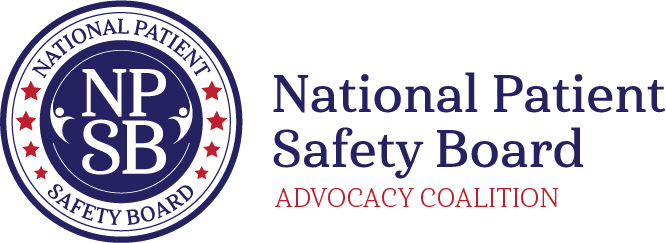Up Next for Patient Safety: Pandemic Preparedness
It Is Time To Create A National Patient Safety Board (NPSB)
WASHINGTON, D.C.—Nov. 16, 2021—The United States is not a good place to get sick. It is no coincidence that the United States has a disproportionately high death count from COVID-19 as well as a high fatality rate every year from preventable medical errors. The latest “Up Next for Patient Safety” podcast connects those dots for policymakers and practitioners alike. Listen to the podcast here www.npsb.org/podcast.
“The U.S. healthcare system has made limited progress in curtailing preventable medical errors over three decades.” said Dr. Karen Wolk Feinstein, podcast host and chair of the National Patient Safety Board Advocacy Coalition.
The U.S. public health and medical systems share similar problems: antiquated workflows and work roles; fragmented systems of responsibility and accountability; a lack of available, timely, actionable and credible data; the rapid application of those data to promising interventions and solutions, according to Feinstein.
Joining this timely discussion about pandemic preparedness are two expert guests of the NPSB Advocacy Coalition’s “Up Next for Patient Safety” podcast (episode 06)—Georges Benjamin, M.D., executive director of the American Public Health Association, and Chris Johnson, co-CEO, TeleTracking.
After nearly two years of COVID-19’s global devastation, it’s clear that the United States—which tops worldwide spending on health care— has work to do to build a standing national emergency response system. Here’s what some industry luminaries are saying:
“It was here. It was terrible. It would have been bad no matter what, but a lot of those deaths, the morbidity and the mortality, were absolutely preventable,” said Benjamin. “It’s all about the handoff.” Benjamin suggests that lack of alignment between public health systems and medical care systems have created a gap. These systems were designed separately and run independently when they must be integrated and coordinated.
Technology innovations for better data-driven decision making are available and essential for improving patient safety beyond this current crisis. “In fact, over the past year, significant progress was made through our work with HHS Protect to bring national visibility to hospital bed capacity and utilization, ICU capacity, COVID diagnoses and demographics, PPE, therapeutics and vaccine inventory and utilization”, according to Chris Johnson, co-CEO, TeleTracking. He added, such analyses must provide three things: “Hindsight, so we can learn from the past, including medical errors; insight, so that we can react in real time based on the markers that tell us something is going to happen or something is happening at the moment; and foresight, so we can plan in anticipation of the future.”
The podcast concludes: Before the next pandemic hits, now is the time to create a National Patient Safety Board—modeled after the National Transportation Board (the NTSB)—to respond rapidly and intelligently and strategically to protect patients, the population, and healthcare workers. It would save lives, take the burden off our frontline public health and medical workers and achieve safety excellence during pandemics and for routine hospital and community health care.
For information about the campaign to create an NPSB, to hear the full pandemic preparedness podcast, and to hear additional episodes of “Up Next for Patient Safety,” visit npsb.org.
About the National Patient Safety Board
A proposed new independent federal agency, the National Patient Safety Board (NPSB) would model in part the National Transportation Safety Board within health care. The NPSB would improve and promote public health and welfare by monitoring and anticipating adverse events, creating recommendations and solutions to prevent medical error, and bringing lessons into practice. A coalition of leading healthcare organizations and experts are advancing the call to expeditiously form the NPSB. The public is invited to “Get on Board” with the NPSB today by staying informed and vigilant, visiting npsb.org. Like the NTSB, the NPSB will save lives.
Contact:
Scotland Huber
PRHI Chief Communications Officer
412-594-2553
huber@prhi.org
